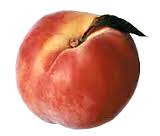He found that he could reconcile this need
with her insistence on the search for gain
if he imagined that it were a seed
that lived and reproduced within her brain.
This thing was planted when she was a girl.
From someone else’s mind it made the leap.
She’d cut the leaves off as they would unfurl,
but never found the root that grew so deep.
It was more complicated than that, sure.
It manifested itself other ways.
It wasn’t quite a life form—not that pure—
more like a symbiosis, but with strays.
The basic urge, which he called ‘Species A’—
the need one feels to have a legacy—
would lie in wait for gods to whom to pray,
and thus would find a partner: ‘Species B’.
A neat Darwinian scenario.
A mutual assistance textbook case.
But what environment would let this grow?
What of the species that supplies the space?
Did human genes, at some point way back when,
enjoy some benefit when they’d allow
these creatures to invade the minds of men?
If he could answer that, he’d answer how.
Much like a portrait of a looking glass,
the question was within itself contained.
An artist often reaches an impasse
and paints the way self-knowledge is constrained.
The search for gain: Again, the Objectivists’ regard of rational self-interest as a higher good.
Mutual assistance: What we called symbiosis in biology class.
Constrained: Lack of perspective.
©2011 Louis A. Merrimac
Subscribe to:
Post Comments (Atom)

No comments:
Post a Comment